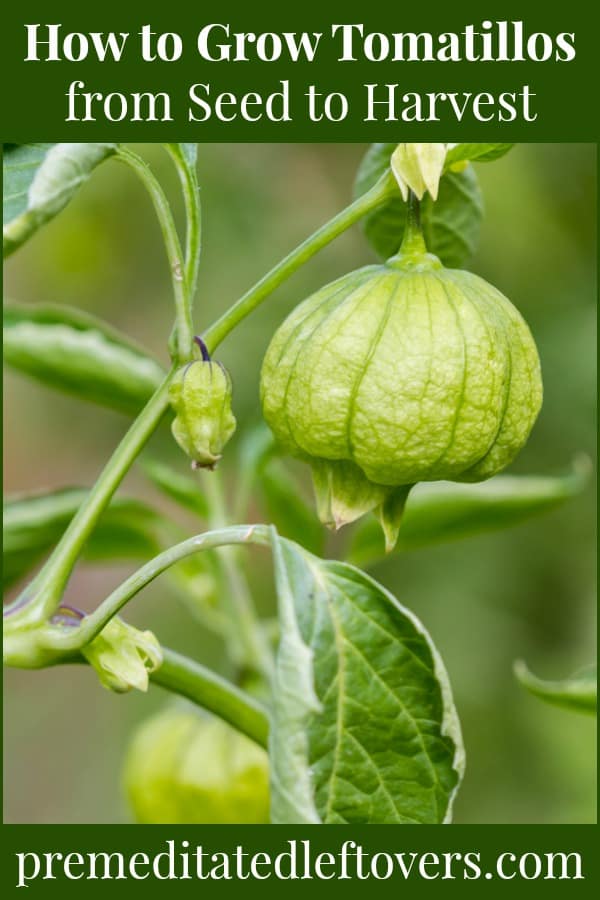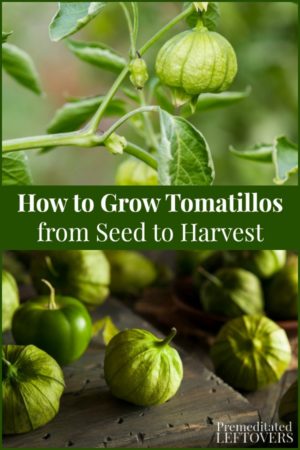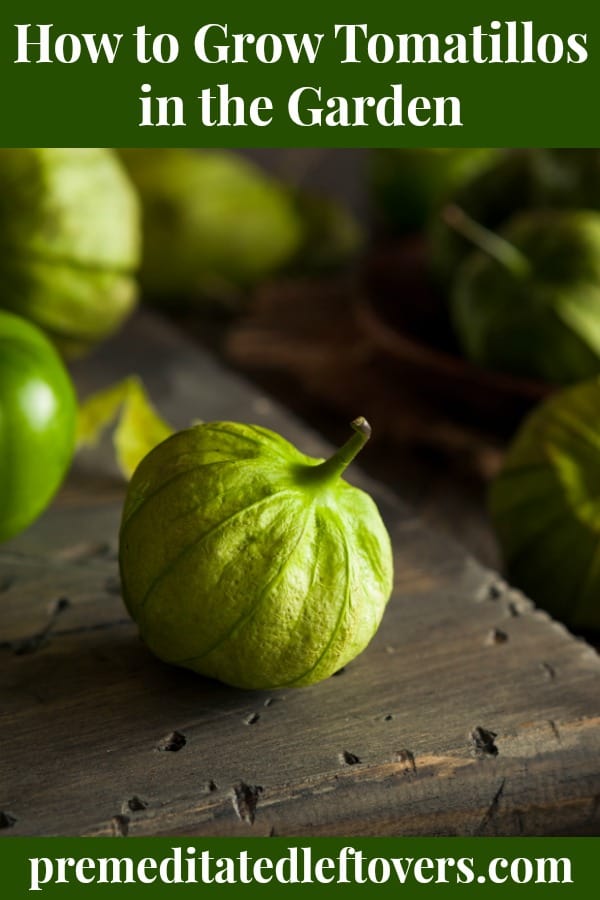The guide on how to grow tomatillos includes everything you need to know about growing tomatillos from seed, caring for tomatillo plants, and harvesting tomatillos.

The word tomatillo sure sounds a lot like the word tomato, and that shouldn’t come as a surprise since this food is the cousin of the tomato! But something you should know is, just because these two vegetables sound the same, it doesn’t mean they are grown the same. If you are curious about growing tomatillos, there are some tips you should know. To grow your tomatillos with success, look below at some helpful tips for growing tomatillos right in your own backyard.
How to Grow Tomatillos
How to start tomatillos seeds indoors:
Tomatillo seeds are a not a common seed at most gardening centers. If you can’t spot any at your local gardening center, head to specialty seed catalogs or online retailers. This way you can assure you are getting good quality seeds to start.
Tomatillos are a summer plant, just like pepper or tomatoes. Because of this, you want to start the seedlings indoors 4-5 weeks before the last frost of the season. It is best to use a peat-lined planting tray or peat pots when planting your tomatillo seedlings. Use a soil that has been enhanced with nutrients so you can give the seeds a strong start.
When using peat pots, you can add 2-3 seeds per pot and thin out once the seeds start to sprout. Wait until seedlings are a good 2 inches tall before you start the thinning process. Water with 2 inches of water per week, make sure your pots are draining properly, and be sure they have full sun for at least 6-8 hours a day.
Tips for planting tomatillo seeds outdoors:
If you have a nice, warm, lengthy growing season, you can plant your tomatillo seeds directly into the ground. You should be sure you choose an area that hasn’t hosted tomato plants in the last year. Use a space that gets full sun (6-8 hours) and drains well.
When planting your seeds, you want to be sure they have room to stretch. You can do as you did with your peat pots above, planting clusters of 2-3 seeds in groups 2 feet apart. You can then thin as the seedlings mature.
Tips for growing tomatillos from seedlings:
Whether you are transplanting seedlings or starting from seedling, tomatillos will require some extra care. Seedlings should be planted about 2 feet apart as they will spread. You can bury them deep, so the seedling is well supported at the stem. A light sprinkle, as well as initial liquid plant food feeding at this time, is helpful.
How to care for tomatillo seedlings:
Once you have seedlings in the ground, you will need to take care to protect the seedlings from rot and too much moisture. As soon as you are able, add support or a cage around the seedling. This will help prevent the stems of the plant from re-rooting and taking over your gardening space. Also, a cage or trellis will keep foliage off the ground, helps the plant aerate, and can prevent rot or fungus from setting in.
Continue to give your seedlings 2 inches of water per week applied at the base of the plant and never on the stems or foliage. Continue to offer support as needed via a trellis or stakes.
Issues you may encounter:
Beetles may wish to dine on your tomatillos as they reach maturity. To help avoid this, you can set beetle traps or use a food safe repellent on the plants. Birds, chipmunks, and other creatures tend to leave tomatillos alone.
How to harvest tomatillos:
Now comes the fun part of harvesting! You can pick the tomatillo when the fruit is nice and green and the stem or husk of the fruit have filled out. Tomatillos aren’t exactly juicy but firm when ready to be picked. You can simply cut the tomatillo from the stem leaving the husk intact. Store the tomatillo in a paper bag in the fridge until you are ready to use.
When you are ready to eat your tomatillos, try them in salsa, salsa verde, or Mexican inspired sauces!
Growing tomatillos is a fun way to expand your menu! Give these tips for growing tomatillos a try and see how easy they can be!



Dawn says
I had a bumper crop two years ago. They came back again last year without me doing anything. Will they continue to come back? Do I need to do anything to the area or rotate them?
Marcy miller says
I have large husks or shells and small fruit inside.
Sandy says
I grow tomatillos all the time.
I just plant the little pieces I trim off when I’m using them in the kitchen.
Works beautifully. They sprout easily and make good healthy plants, and just from scraps I would throw away.